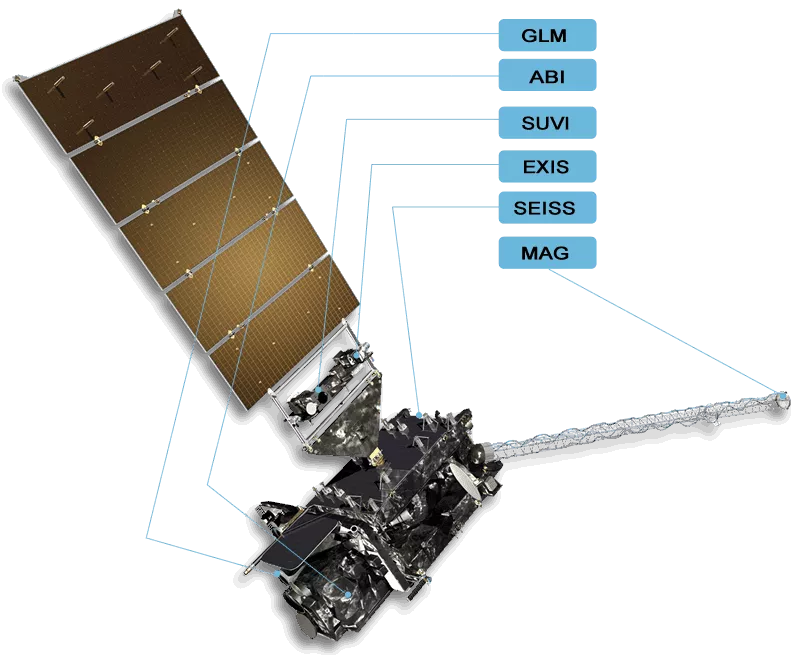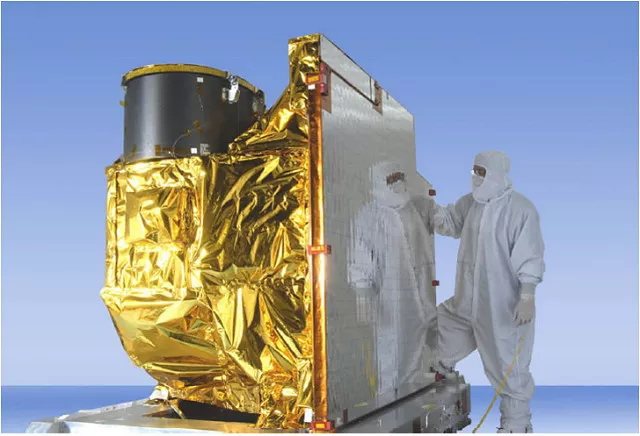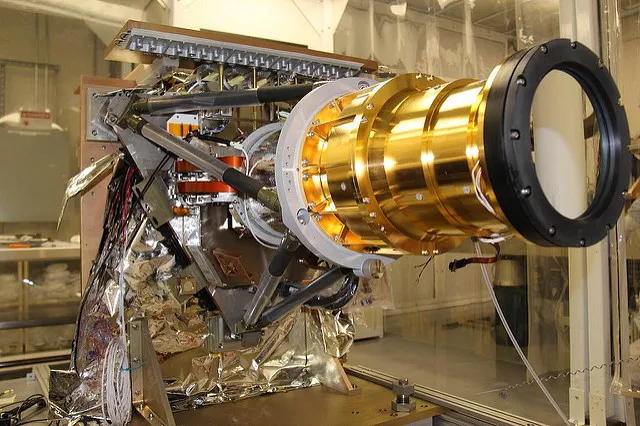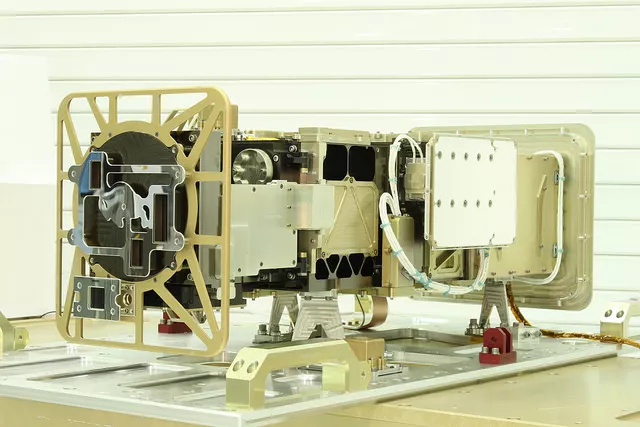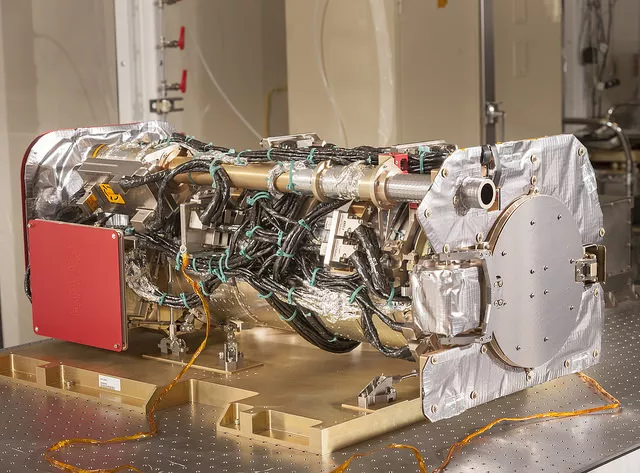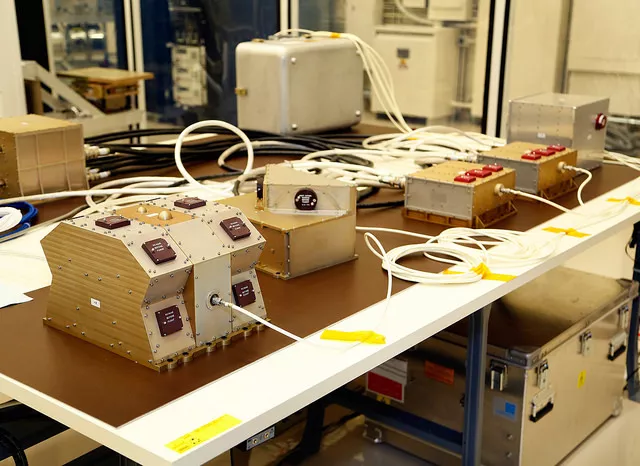GOES-R Spacecraft
The GOES-R Series spacecraft bus is three-axis stabilized and designed for 10 years of on-orbit operation preceded by up to five years of on-orbit storage. The satellites are able to operate through periodic station-keeping and momentum-adjust maneuvers, which allow for near-continuous instrument observations. Explore GOES-R 3D model.
Interactive Satellite

